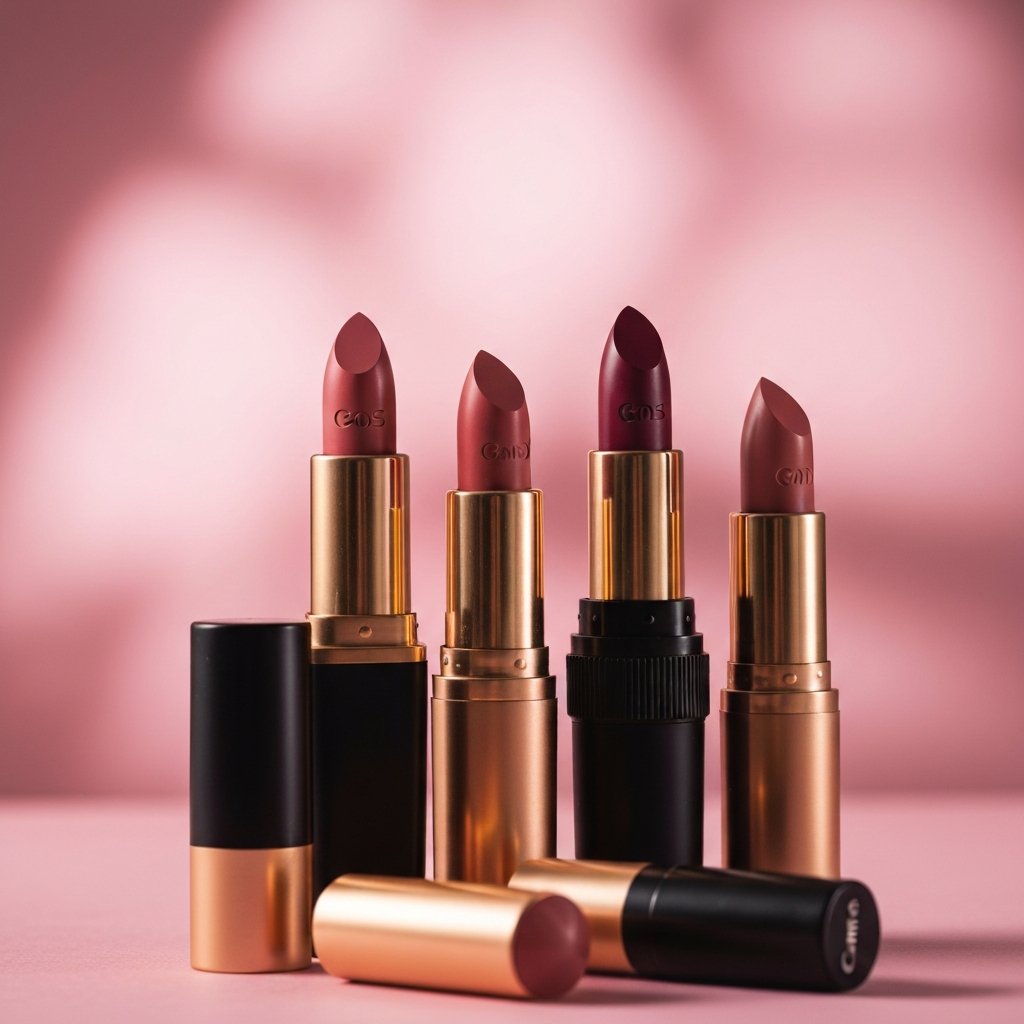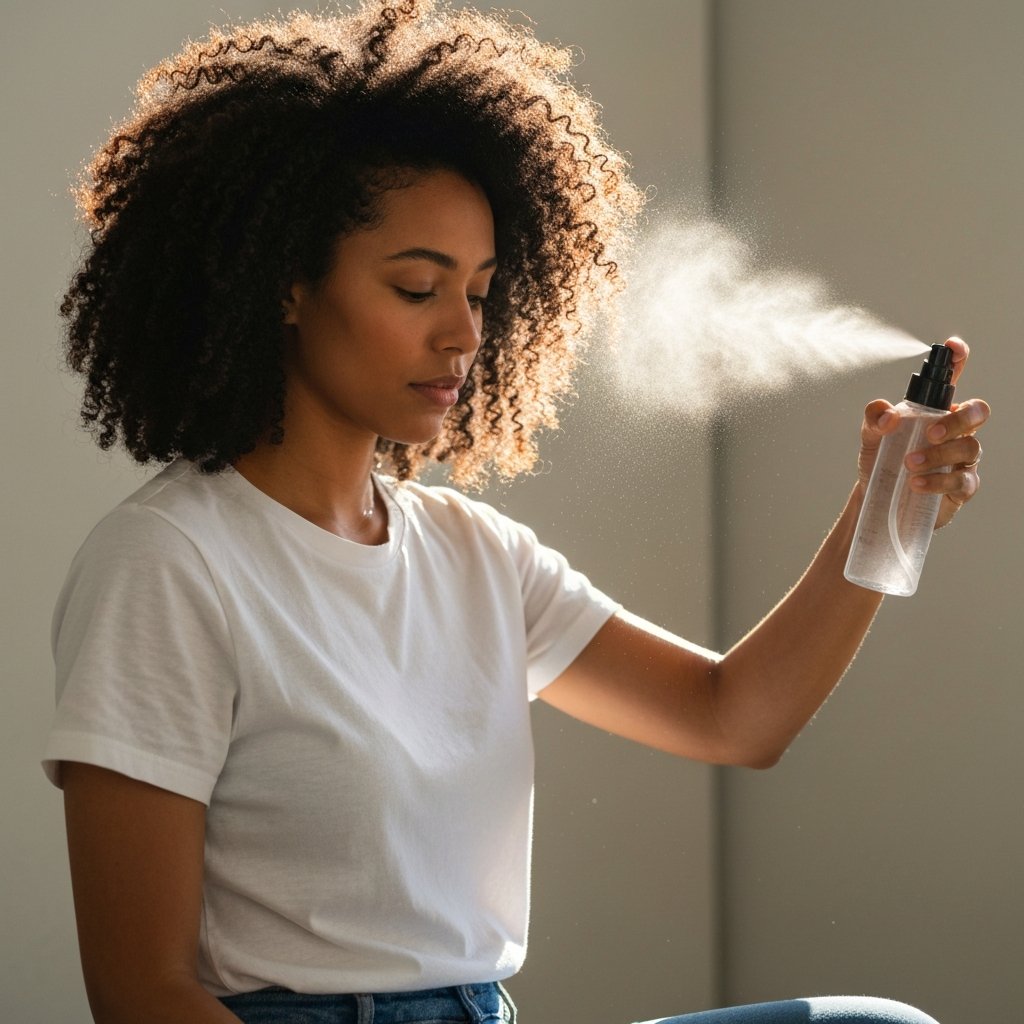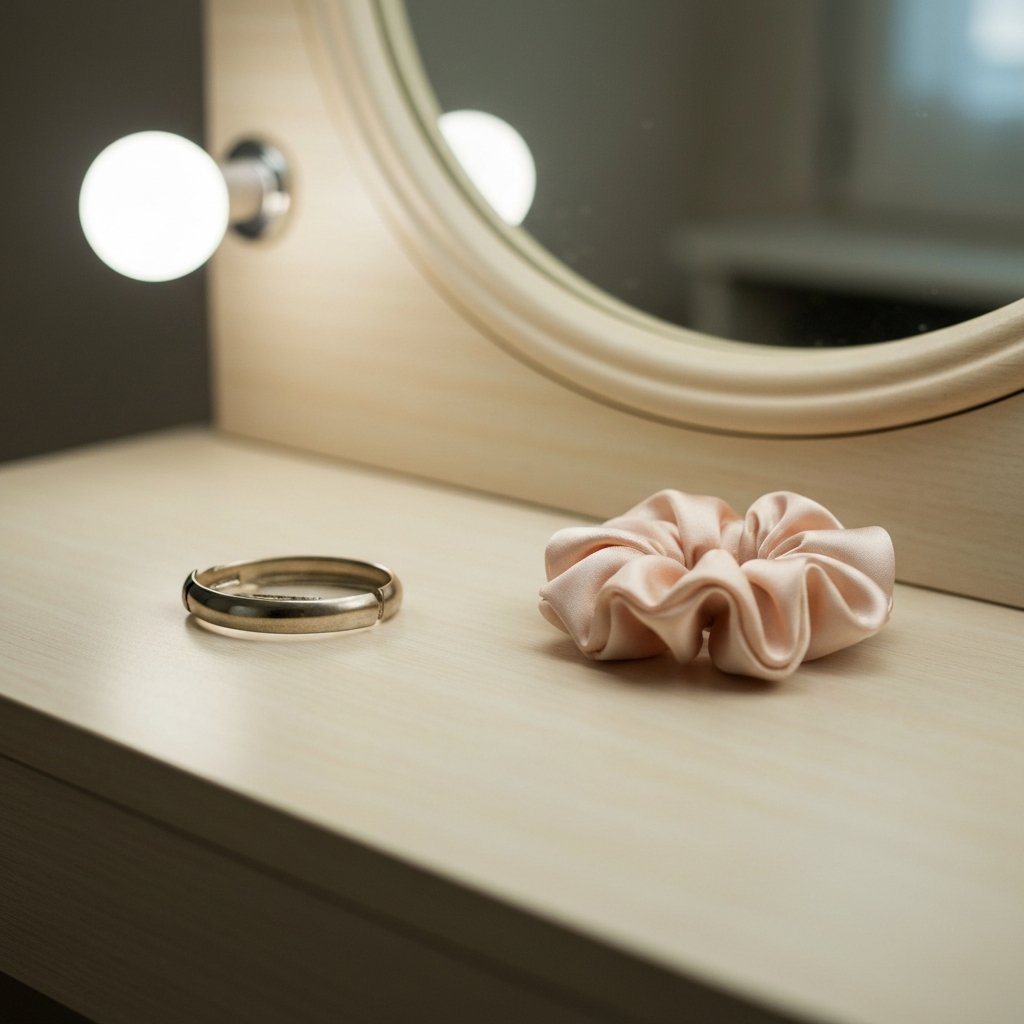Waking up with curls that look just as good—or perhaps even better—than they did the day before is the ultimate goal for anyone with textured hair. However, the reality often involves waking up to flattened roots, undefined frizz, and a shape that defies gravity in all the wrong ways. Learning how to sleep with curly hair is not just about vanity; it is a crucial component of hair health. Nighttime friction is one of the leading causes of breakage, split ends, and moisture loss in textured hair types.
Whether you have loose waves, bouncy ringlets, or tight coils, your nighttime routine dictates how much time you will spend on your hair the next morning. Without a proper strategy, you risk crushing the curl pattern you worked so hard to define on wash day. The good news is that with the right protective styles and a few strategic accessories, you can preserve your definition and volume while you sleep.
In this comprehensive guide, we will explore the science of hair friction, detailed tutorials on the most effective protective styles like the pineapple and twists, and a step-by-step breakdown of the morning refresh process. By implementing these professional techniques, you can extend the life of your wash-and-go styles and ensure your curls remain hydrated and healthy.
The Science of Sleep and Hair Friction
To understand why protective styling is necessary, we must first understand what happens to hair strands at night. When you toss and turn during sleep, your hair rubs against your pillowcase. If you are using standard cotton bedding, this interaction creates significant friction. Cotton is an absorbent material; it acts like a towel, wicking moisture away from the hair shaft. For curly hair, which is naturally drier than straight hair due to the shape of the follicle preventing sebum from traveling down the shaft, this moisture loss is detrimental.
Furthermore, the rough fibers of cotton snag the hair cuticle—the outermost protective layer of the hair strand. When the cuticle is roughed up, it leads to tangles, matting, and the dreaded frizz halo. Over time, this mechanical damage weakens the hair, leading to breakage at the mid-shaft and split ends. This is why many stylists argue that your nighttime routine is just as important as the conditioning products you use in the shower.
By creating a barrier between your hair and abrasive surfaces, or by securing the hair in a way that minimizes movement, you preserve the structural integrity of the curl clump. The goal is to keep the hair hydrated and stationary. This prevention strategy reduces the need for heavy manipulation in the morning, which in itself is a major cause of breakage for textured hair.
The Foundation: Silk and Satin Accessories
Before diving into specific hairstyles, the environment in which you sleep must be optimized for curl preservation. The debate between silk and satin is common, but both serve the same primary function: providing a slip surface that eliminates friction.
The Benefits of Silk Pillowcases
Mulberry silk is a natural protein fiber that is hypoallergenic and breathable. Unlike cotton, it does not absorb moisture, allowing your hair's natural oils and any applied night serums to remain on the strand where they belong. Sleeping on a silk pillowcase is the most passive form of hair care; even if you fall asleep without tying your hair up, the damage will be significantly less than on cotton. It also benefits the skin by preventing sleep creases.
Satin Bonnets and Scarves
While a pillowcase protects the surface, a bonnet or scarf encapsulates the hair, creating a micro-environment of humidity that keeps curls plump. Satin is a weave that can be made from silk, polyester, or nylon. High-quality polyester satin is durable and affordable. When choosing a bonnet, look for wide, soft elastic bands that won't stress your hairline. For those with longer or thicker hair, jumbo bonnets or adjustable drawstring designs ensure that the curls are not compressed too tightly against the skull, which can flatten the pattern.
The Pineapple Method: A Cult Classic
The "Pineapple" is arguably the most popular sleeping technique for curly hair, particularly for those with hair length that reaches the shoulders or longer (Type 3 curls usually benefit most from this). The concept is simple: you pile all your hair on top of your head to protect the curls from being crushed by your body weight while you sleep.
How to Execute the Pineapple
- Flip and Gather: Bend forward at the waist and gather all your hair towards the very top of your head, near your forehead.
- Secure Loosely: Use a satin scrunchie or a spiral telephone-cord hair tie. Slip it over the base of the ponytail once. Do not twist the tie or double it over unless your hair is extremely fine. The goal is to hold the hair up, not to create a tight ponytail that leaves a dent.
- Release: Stand up. Your curls should sit on top of your head like the leaves of a pineapple.
Why It Works
By positioning the hair on top of the head, only the hair at the back and sides (the under-layers) touches the pillow. The delicate ends and the top layers, which are the most visible parts of your style, remain untouched. In the morning, when you take the scrunchie out, gravity helps the curls fall back into place with added volume at the roots.
Protective Braids and Twists
For tighter curl patterns (Type 4 coils) or hair that is prone to extreme tangling, the pineapple might not offer enough control. In these cases, structural protective styles are necessary to lock in moisture and prevent matting.
Two-Strand Twists
Before bed, divide your hair into 4 to 8 large sections. Apply a small amount of leave-in conditioner or oil if the hair feels dry. Twist each section loosely from root to tip. This method is excellent for maintaining elongation and preventing shrinkage overnight. It essentially "resets" the curl pattern, ensuring that when you unravel them in the morning, you have defined, uniform waves or curls.
The Loose Plait
For those with wavy or loose curly hair (Type 2B to 3A), a single loose French braid or a standard three-strand braid can prevent tangles. However, be aware that braiding will alter your natural curl pattern into a crimped wave. If you want to preserve your specific curl spiral, this might not be the best method, but it is superior for tangle prevention.
The Multi-Pineapple
If your hair is too short to reach a single ponytail on top of your head, try the multi-pineapple. Create two or three smaller pineapples (like bantu knots but looser) to ensure all shorter layers are lifted off the neck and face.
The Medusa Clipping Method
Named after the snake-haired mythological figure, this method is fantastic for shorter curls or layered cuts where the hair falls out of a pineapple. It involves using small jaw clips to pin curls up loosely.
To do this, simply grab small sections of hair from the top and sides of your head and clip them near the roots on top of your head. The clips should be loose enough to not cause tension but secure enough to hold the hair up. This allows for volume preservation without the dent that a hair tie might cause. It is particularly effective for preserving root volume, as the clips lift the hair away from the scalp overnight.
Morning Refresh Routine: Bringing Curls Back to Life
Even with the best nighttime protection, morning hair often requires a refresh. The goal is to reactivate the products applied on wash day without layering on so much new product that the hair becomes weighed down or greasy.
Step 1: Assess and Settle
When you first take down your pineapple or remove your bonnet, let your hair "settle" for 10 to 15 minutes. Gravity needs time to pull the curls down from their elevated position. Shake your head gently from side to side to encourage separation.
Step 2: Water is Key
Water is the reactivating agent for most styling gels and creams. Using a continuous mist spray bottle, lightly dampen your hair. You do not want it soaking wet, just slightly humid. Focus on the areas that look frizzy or flattened.
Step 3: Spot Treat
Rub a pea-sized amount of curl cream or gel between your wet palms (emulsifying the product). Use the "praying hands" method to smooth over frizz halo on the crown. For individual curls that have lost their shape, twirl them around your finger with a tiny bit of product to reform the spiral.
Step 4: Diffuse or Air Dry
If you are in a rush, use a diffuser on low heat and low speed to dry the dampened spots. This will also help boost volume. If you have time, let it air dry. Once 100% dry, scrunch out any gel cast with a few drops of lightweight oil (like argan or jojoba) to seal the cuticle and add shine.
Common Mistakes to Avoid
Even seasoned curly-haired individuals make mistakes that compromise their sleep protection. Avoiding these pitfalls is essential for long-term hair health.
Sleeping with Wet Hair: This is a recipe for disaster. Wet hair is in its most fragile state. Sleeping on it causes extreme breakage, matting, and can even lead to fungal scalp issues due to trapped moisture in the pillow. Always ensure your roots are 100% dry before hitting the pillow.
Using Tight Elastics: Standard hair ties with metal clasps or tight rubber bands can shear through hair strands. Always opt for satin scrunchies, silk ribbons, or spiral ties that distribute tension evenly.
Ignoring Hydration: If your hair feels crispy before bed, putting it in a bonnet won't save it. Apply a dry oil or a moisturizing foam before wrapping it up to treat the hair while you sleep.
Conclusion
Mastering how to sleep with curly hair is a journey of trial and error. What works for loose waves may not work for tight coils, and your routine may change as your hair grows. The common denominator, however, is protection. By investing in silk or satin, utilizing styles like the pineapple or twists, and mastering a gentle morning refresh, you transform your sleep from a damaging event into a restorative process for your curls. Consistency is the secret ingredient; make these steps a non-negotiable part of your nightly regimen, and your hair will thank you with growth, shine, and definition.
Frequently Asked Questions (FAQ)
1. How often should I wash my bonnet or silk pillowcase?
Hygiene is crucial for skin and hair health. It is recommended to wash your silk pillowcase and bonnet at least once a week. Oils from your hair and face, along with product buildup, accumulate on the fabric and can lead to clogged pores or greasy hair if not cleaned regularly.
2. Can I sleep with a gel cast?
Yes, sleeping with a gel cast (the crunchy layer formed by drying gel) is actually beneficial. The cast protects the curl structure from friction overnight. In the morning, you can "scrunch out the crunch" with oil, revealing soft, defined curls underneath.
3. My bonnet always falls off at night. What should I do?
If your bonnet slips off, try using a few bobby pins to secure it to the hair near your temples (be careful not to pin too tightly). Alternatively, look for bonnets with adjustable drawstrings or tie-straps rather than just elastic bands. You can also layer a silk scarf tied securely around the perimeter of the bonnet.
4. Is it better to pineapple or braid for sleeping?
This depends on your curl type. Loose curls and waves (Types 2 and 3) usually prefer the pineapple as it maintains volume. Tighter coils and kinky hair (Type 4) often benefit more from twists or braids, which lock in moisture and prevent shrinkage and tangling.
5. How do I fix flattened roots in the morning?
If the pineapple left your roots flat or stretched, use a pick comb to gently lift the hair at the root without combing through the length. You can also massage your scalp with your fingertips to create volume, or use a root-lifting spray during your refresh routine.
6. Should I apply oil to my hair before bed?
Applying a lightweight sealing oil to the ends of your hair before bed is a great way to prevent split ends. This is often called "sealing." However, avoid heavy oils on the scalp daily, as this can clog follicles. Focus on the mid-lengths and ends where dryness is most prevalent.

















